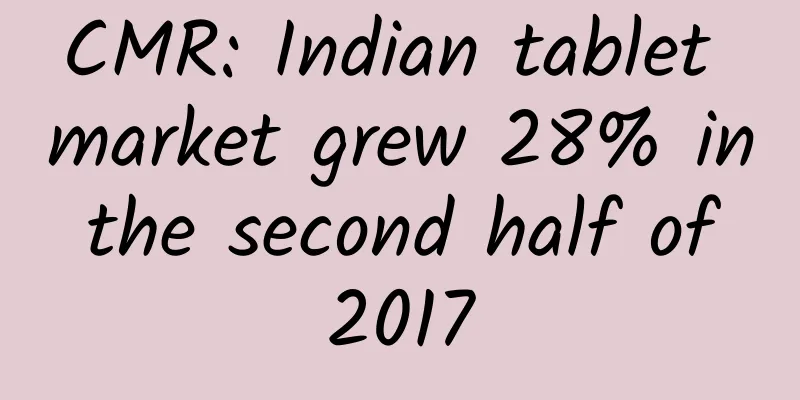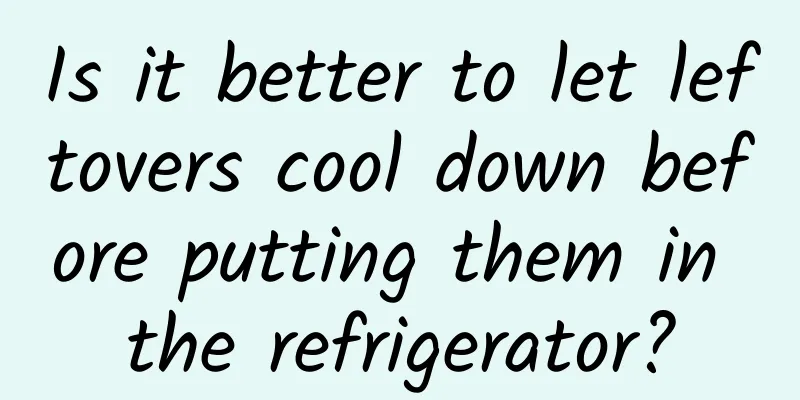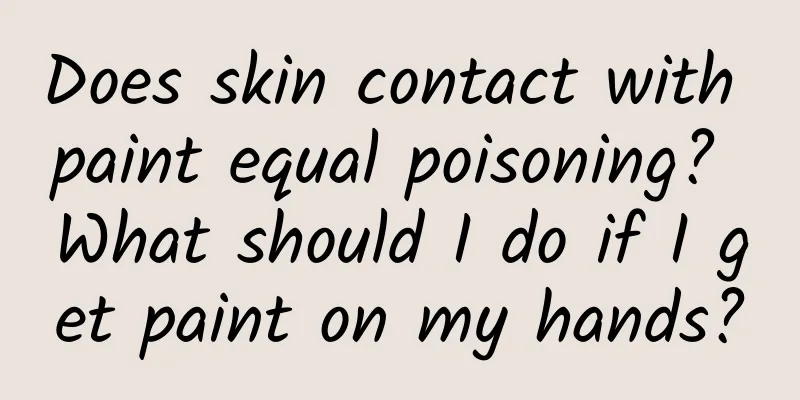Do you really understand hypoglycemia?

|
Speaking of hypoglycemia, I believe everyone is familiar with it. Almost all diabetics and many healthy people have experienced hypoglycemia. However, you may not really know many "truths" about hypoglycemia. Next, let's talk about those things you don't know about hypoglycemia. 1. The diagnostic criteria for hypoglycemia are different between diabetic and non-diabetic patients Many diabetic patients have autonomic neuropathy and poor perception of hypoglycemia. Therefore, hypoglycemia is more harmful to the body and can easily induce serious cardiovascular events, such as arrhythmia, heart failure, angina pectoris, acute myocardial infarction, stroke, etc. For safety reasons, the diagnostic criteria for hypoglycemia in non-diabetic patients and diabetic patients are different. The standard for hypoglycemia in non-diabetic patients is ≤2.8 mmol/L, while diabetic patients can be diagnosed with hypoglycemia when the blood sugar is ≤3.9 mmol/L. If the blood sugar is <3.0 mmol/L, it is defined as clinically significant hypoglycemia, indicating that severe and clinically important hypoglycemia has occurred. 2. Hunger may not mean low blood sugar Hunger is usually considered the most reliable warning sign of hypoglycemia. In the eyes of many patients, as long as they have symptoms of hunger, it indicates that hypoglycemia has occurred. In fact, hunger does not necessarily mean hypoglycemia has occurred. Some patients, despite high blood sugar, cannot transport glucose into cells for the body to use due to absolute insulin deficiency or insulin resistance, and they also feel hungry. Many diabetic patients have this experience: if blood sugar is very high, even if they eat a lot, they still feel very hungry. Once blood sugar is well controlled, hunger is significantly reduced. There is also a situation called "hypoglycemia reaction". This symptom often occurs during the patient's treatment. Because the patient's blood sugar drops too quickly or drops too much, even if the blood sugar is still within the normal range or even slightly higher than the normal value, the patient may still experience hypoglycemia symptoms such as palpitations, sweating, hand tremors, hunger, etc. This feeling is mainly caused by the patient's inability to adapt to the rapid changes in blood sugar. Therefore, when patients feel hungry, they must monitor their blood sugar in time to determine whether their blood sugar is high or low to avoid blindly supplementing food. 3. Hypoglycemia can have many different “faces” Although they are all hypoglycemia, the clinical manifestations of hypoglycemia in patients of different age groups are not exactly the same. The symptoms of hypoglycemia in adults are generally more typical, mainly manifested as symptoms of sympathetic nerve excitement, such as hunger, panic, hand tremors, sweating, weakness in the limbs, etc. The symptoms of hypoglycemia in the elderly are often atypical. They either have no symptoms or manifest as symptoms of central nervous system sugar deficiency, such as strange speech and behavior, confusion, convulsions, drowsiness, coma, etc., which can easily be misdiagnosed as "acute stroke" or "epileptic seizures." The main manifestations of hypoglycemia in young children are difficulty in breastfeeding, irritability and crying, pale complexion, cold sweats, lack of concentration, nightmares, enuresis, etc. If you don't understand this, it is often easily ignored by your family. 4. Hypoglycemia may not always have symptoms When blood sugar is lower than normal, some patients will have obvious symptoms, some patients will have mild symptoms, and some patients will have no symptoms at all. "Asymptomatic hypoglycemia" is more common in elderly diabetic patients and patients who frequently suffer from hypoglycemia for a long time (such as some "brittle diabetes" patients). The reason may be related to damage to the body's nervous system, decreased sympathetic nerve perception of hypoglycemia, and physiological decline of adrenal cortex function in the elderly. Asymptomatic hypoglycemia patients often fall into a coma without knowing it, which is very dangerous because there are no symptoms when hypoglycemia occurs. For such patients, three points should be noted: ① Strengthen all-day blood sugar monitoring, especially nighttime blood sugar monitoring; ② The blood sugar control standard should be appropriately relaxed and not too strict; ③ Pay attention to adding meals before going to bed to prevent nighttime hypoglycemia. 5. Not all hypoglycemia is related to diabetes Hypoglycemia mainly occurs during the treatment of diabetes, such as excessive dieting, excessive exercise, excessive use of hypoglycemic drugs (including insulin), failure to eat in time after taking medication, and drinking alcohol on an empty stomach. However, some hypoglycemia also occurs in non-diabetic patients, such as "islet B cell tumors", certain extrapancreatic tumors (such as lung cancer), advanced liver cirrhosis, chronic adrenal insufficiency (Addison's disease), autonomic dysfunction and other diseases, which can also cause hypoglycemia. Therefore, for unexplained hypoglycemia, it is important to find the cause and find out the primary disease hidden behind the hypoglycemia. Only in this way can the hypoglycemia problem of such patients be fundamentally solved. 6. "Low blood sugar" is often more dangerous than "high blood sugar" Everyone is relatively clear about the dangers of high blood sugar and pays great attention to them; in contrast, people often do not pay enough attention to the serious dangers of low blood sugar. In fact, the harm of low blood sugar is no less than that of high blood sugar, and sometimes it is even more dangerous. If the harm of high blood sugar is calculated in years, the harm of low blood sugar is calculated in hours. Severe low blood sugar can cause brain dysfunction, and more than 6 hours will cause permanent brain damage. Not only that, low blood sugar in the elderly can easily induce arrhythmia, heart failure, angina pectoris, myocardial infarction and even sudden death. 7. "Asymptomatic hypoglycemia" is more terrible than "symptomatic hypoglycemia" Symptoms such as hunger, palpitations, sweating, and hand tremors are warning signs of hypoglycemia, which can remind patients to save themselves or seek medical treatment in time. However, patients with "asymptomatic hypoglycemia" often do not feel anything or have any signs when hypoglycemia occurs, and patients often fall into a coma without knowing it. If they are not discovered in time by others and treatment is delayed, the patient is likely to become a vegetable due to continued hypoglycemia, or even be in danger of death. 8. Different hypoglycemic drugs have different risks of hypoglycemia The risks of hypoglycemia for various types of glucose-lowering drugs commonly used in clinical practice are different. Insulin and insulin secretagogues (including sulfonylureas and glinides) have a relatively high risk of hypoglycemia and are classified as "hyperglycemic drugs". Glucagon-like peptide-1 (GLP-1) receptor agonists, sodium-glucose cotransporter 2 (SGLT-2) inhibitors, dipeptidyl peptidase 4 (DPP-4) inhibitors, α-glucosidase inhibitors, biguanides, and thiazolidinediones have a very low risk of hypoglycemia and generally do not cause hypoglycemia when used alone. They are classified as "hyperglycemic drugs" (also known as "smart glucose-lowering drugs"). 9. “Hypoglycemia reaction” should also be treated as hypoglycemia Clinically, when some diabetics have hypoglycemia symptoms such as panic and hunger, their random blood sugar is not low. We call this phenomenon "hypoglycemia reaction". Since "hypoglycemia reaction" can also induce serious cardiovascular and cerebrovascular events, it should also be treated as hypoglycemia. The view that "hypoglycemia reaction is not hypoglycemia and therefore does not need to be treated" must be corrected. 10. Eating dry food may not be effective in correcting all hypoglycemia When suffering from hypoglycemia, many diabetic patients will choose staple foods such as steamed bread and biscuits to relieve symptoms. Although this is not wrong, it is not the most appropriate choice. Since the treatment of hypoglycemia requires every second, the correct approach is to quickly eat "monosaccharide" foods such as sugar cubes, juice, and honey, because these foods can be quickly absorbed into the blood by the intestines, thus quickly relieving the symptoms of hypoglycemia. However, starches such as steamed bread are "polysaccharide" foods, which need to be metabolized step by step in the body to become monosaccharides before they can be absorbed by the human body. The speed of correcting hypoglycemia is relatively slow. In addition, when hypoglycemia occurs, diabetic patients taking α-glucosidase inhibitors must supplement monosaccharides (such as glucose, sugar water, fruit juice, etc.) to quickly correct hypoglycemia. This is because α-glucosidase inhibitors can delay the absorption of large molecular carbohydrates (such as starchy foods such as steamed bread), making it unable to quickly increase blood sugar, and thus unable to quickly correct this type of hypoglycemia. |
<<: Four Misconceptions about Morning Exercise
>>: How Much Do You Know About Fever in Children?
Recommend
How badly must your body be damaged before you stop smoking, drinking and chewing betel nuts?
References: [1]. Deng Minghui, Wu Hanjiang. Retro...
What should pregnant women do if their belly is tight?
Many female friends have experienced a tight bell...
What are the tips for women to lose weight?
There are no ugly women in the world, only lazy w...
Transparent underwear will get wet if there is too much leucorrhea
Many women have symptoms of increased and transpa...
Complete list of treatments for uterine fibroids
Uterine fibroids are a very common gynecological ...
Premenstrual fever
Menstruation can affect women's physical heal...
How to prevent stretch marks
Pregnancy is a difficult and noble thing for wome...
Reasons for slow embryo development
The creation of life is a delicate and complex pr...
Will hydronephrosis cause constant pain in pregnant women?
Our life activities are inseparable from the kidn...
How to prevent and treat breast hyperplasia?
With the pollution of the living environment and ...
Thick vaginal discharge in early pregnancy
Discharge is a very important thing for women. If...
Fetal movement after entering the pelvis
When the fetus enters the pelvis, it means the st...
Will taking progesterone increase progesterone?
Many women suffer from progesterone deficiency af...
Dysmenorrhea affects pregnancy
Dysmenorrhea is a disease that can cause great pa...
My aunt is a little bit dark brown
When abnormal conditions are found during menstru...









